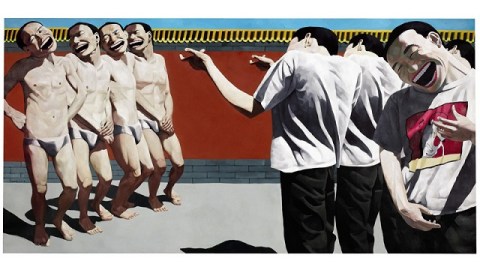Small World: Are American Museums Forgetting the Rest of the World?

“What happened to Africa?” an art-world friend of New York Times writer Holland Cotter asked. “It disappeared.” What that friend was alluding to, and what Cotter analyzes in a recent article titled “Under Threat: The Shock of the Old,” is how American art museums show little non-Western art. The little non-Western art that graces their walls seems to be almost exclusively contemporary art—a troubling development considering how homogenous today’s art has become in an international market driven by what sells. Forget the “shock of the new” from today’s art. Worry more about the loss of the “shocking” old, especially the traditional art of cultures beyond our borders. As technology shrinks our world more each day in terms of communication, is it possible that our cultural world is smaller, too, but in the sense of being more narrow? Has the lust to see the new blinded us to the works of the past, especially those we Americans never really knew in the first place?
Cotter cites the fact that (unofficially) 80% of applicants to university art history programs in the United States declare contemporary art as their field of choice. That rough number may be the canary in the coal mine for the future of American art curator practice. Who in the next generation will study non-Western art (not to mention Western art) of the past? “So the situation is that our encyclopedic museums—the ones that most people visit, and look to as repositories of what we most value in art—are rarely doing ambitiously scaled, big-idea shows of older non-Western art, and American art historians of the rising generation aren’t studying it these days,” Cotter laments (but adding that “Europe is doing somewhat better on both counts.”) “In the craze for the new, certain areas of Western art are being neglected too. But it’s non-Western art, chronically marginalized, that is especially vulnerable.” Americans already suffer from a chronic lack of knowledge of the rest of the world and can’t point to a globe and find any of the several countries we’re currently operating militarily in or around. Remove all cultural understanding of the humanity of these non-Western lands, and the trigger finger may get even itchier from sheer ignorance.
As art theorist James Elkins in his controversial and fascinating book, Chinese Landscape Painting as Western Art History (my review here), suggested, we already cannot think of other cultures’ art without putting it into the terms of Western art. That sin of omission on the works of the past seems to have been passed down to the art of the present. We seem to only appreciate works of art by non-Western artists that ring a Western and contemporary “bell” for us, such as Chinese artist Yue Minjun’s 1995 painting Execution (shown above). Execution alludes to the Tiananmen Square protests of 1989 while also quoting canonical Western works such as Goya’s The Third of May 1808 and Manet’s The Execution of the Emperor Maximilien of Mexico. But even those art history quotes pale before the Pop Art mannerism of Yue’s reoccurring smiling faces, which have become the trademark of the artist. As good and insightful an artist as Yue is, the appreciation for his work in the West seems born more of that Pop Art modernism than of any deeply historical foundation in his own or even Western culture.
At the very least, this epic fail on the part of American museums short changes an American public relying on those institutions to educate them about the rest of the world. At its worst, this failure could be seen as part of a xenophobia creeping into our culture that sees the rest of the world as merely a series of colonies whom we judge on how useful they can be to us and how closely they can mimic our society. The classic survey museums that have always led the way in the American art scene need to rise to this occasion as well and prove that even in this increasingly small world, there’s plenty of room for diversity and appreciation of how our differences are our greatest strength.





